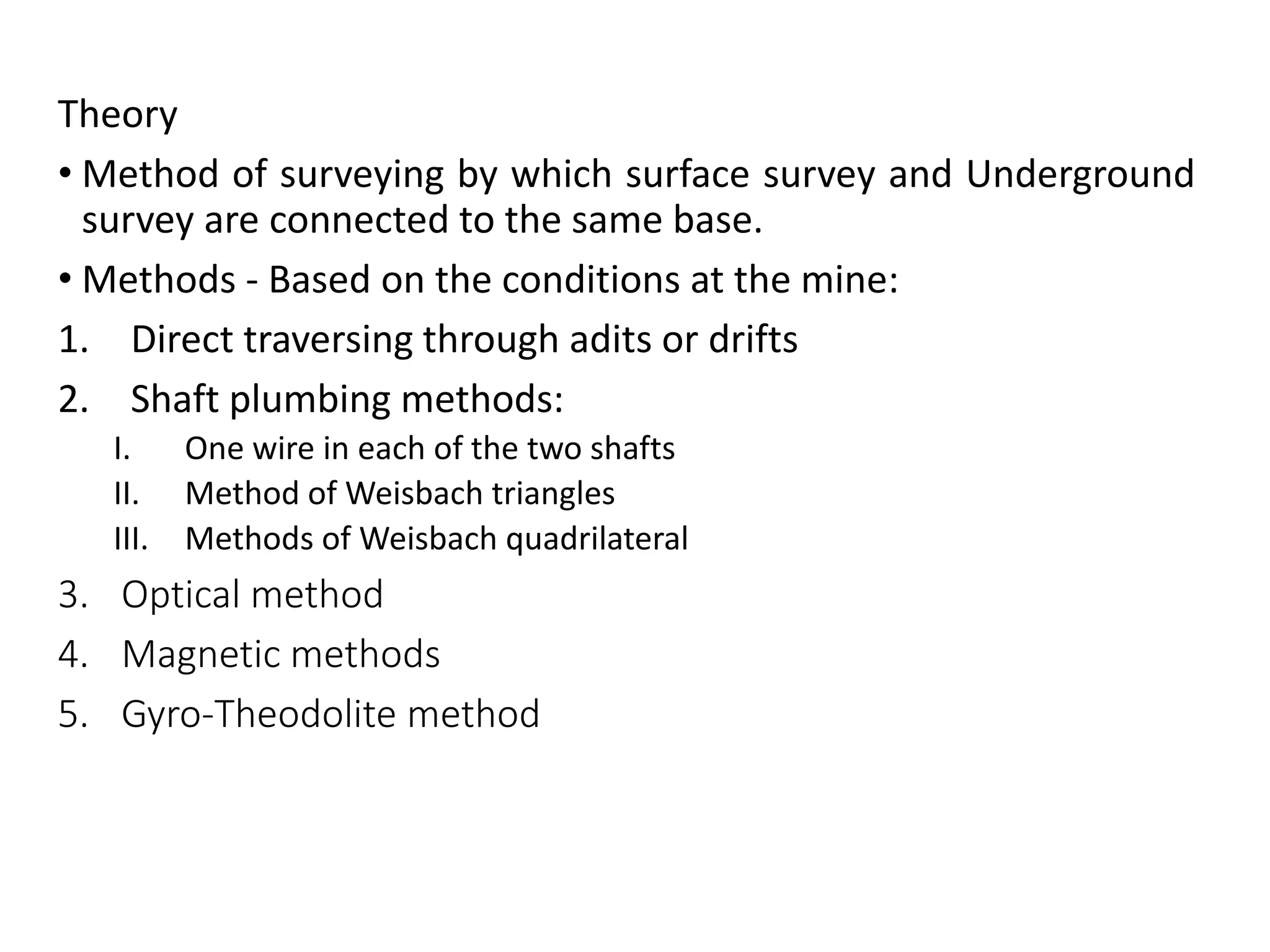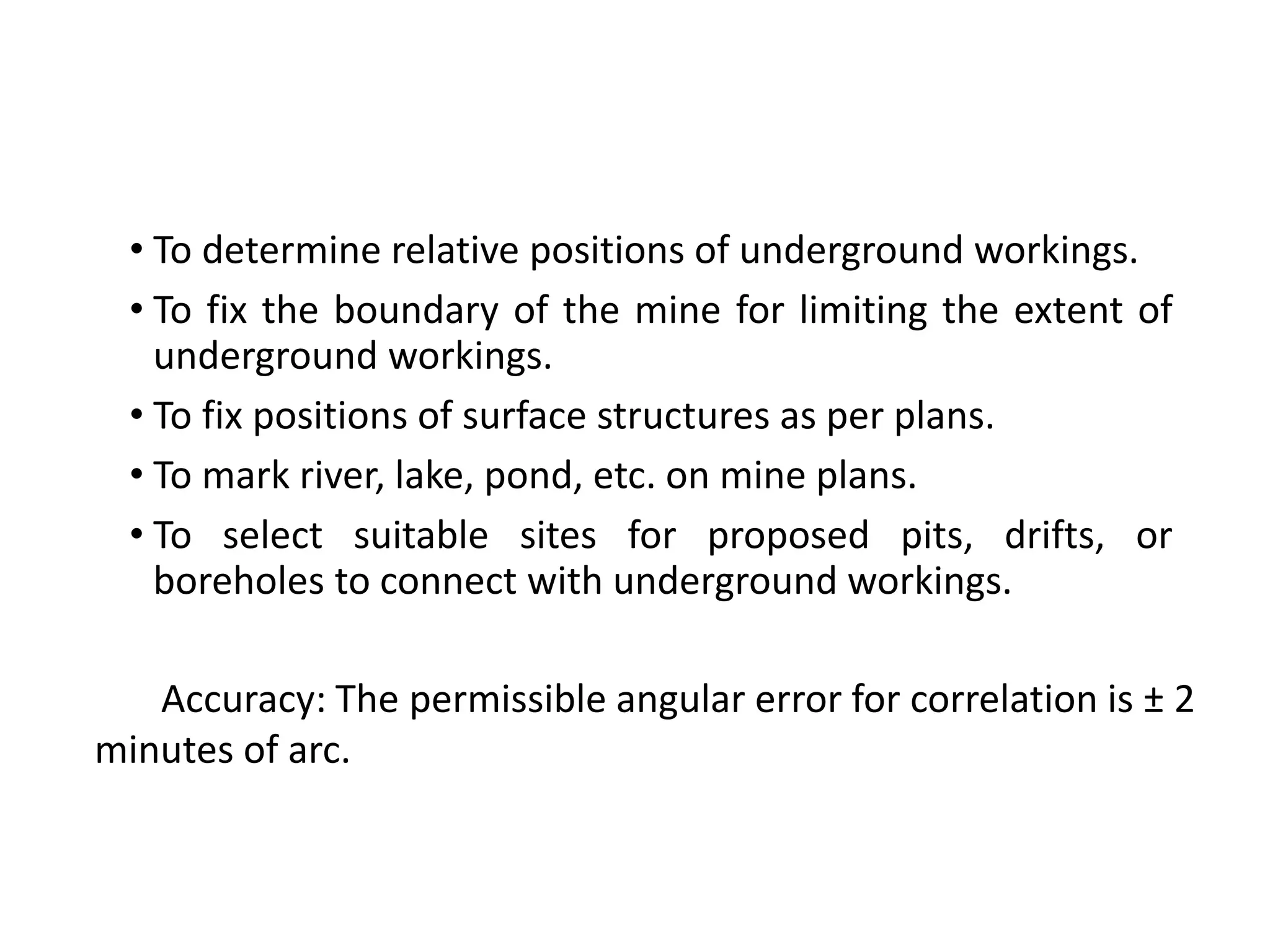1. Underground surveying connects surface surveys to underground workings through plumbing methods using steel wires and a theodolite.
2. The Weisbach triangle method involves setting up a theodolite slightly off the line formed by two steel wires hung from the surface to underground, allowing the azimuth of the plumb plane to be determined through triangle solutions.
3. Care must be taken to minimize angles and maximize distances in the Weisbach triangle for greatest accuracy in determining the azimuth of underground reference lines.









